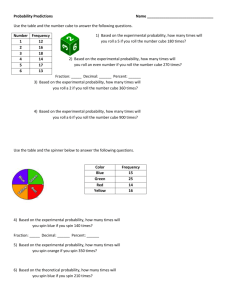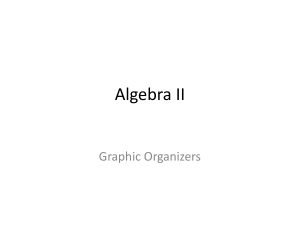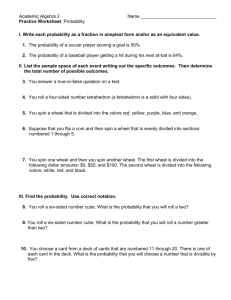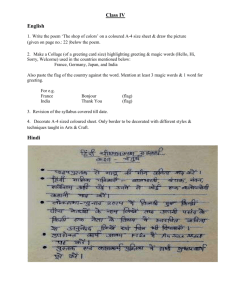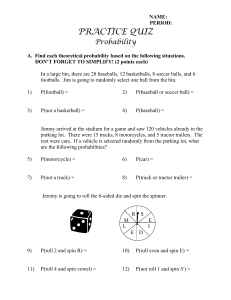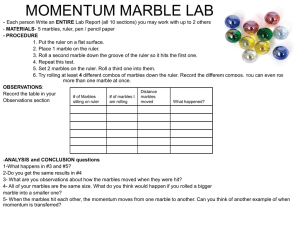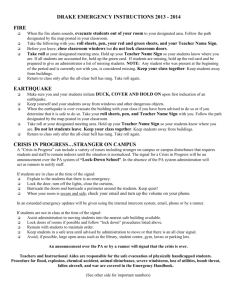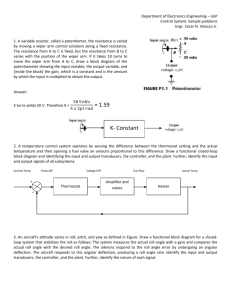Pre-Algebra - Simpson County Schools
advertisement
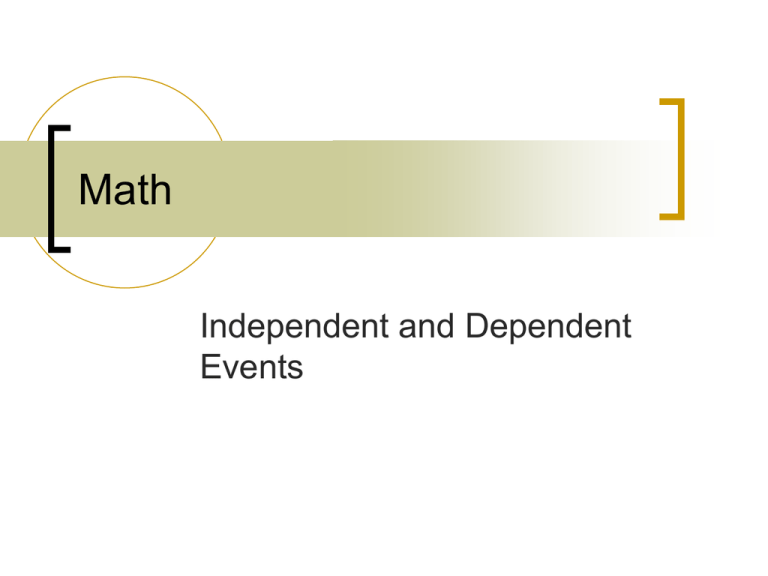
Math Independent and Dependent Events What Are You Learning? I CAN find the probability of independent events. I CAN find the probability of dependent events. Why Do You Need To Know This? Independent and Dependent Events are useful because it allows you to find the probability of multiple events. Example 1 You have 4 cards with an M written on them, 2 with an A, 6 with a T, and 8 with an H. You draw an M card at random and replace it. What is the probability that the next card you draw at random will also be an M card? P(M) 2nd card matches P(M) P(A) P(A) P(T) P(T) P(H) P(H) First Card Example 2 You have 4 cards with an M written on them, 2 with an A, 6 with a T, and 8 with an H. You draw an M card at random and do not replace it. What is the probability that the next card you draw at random will also be an M card? First Card 2nd card matches P(M) P(M) P(A) P(A) P(T) P(T) P(H) P(H) Do You Know? For any letter, why is the probability for selecting the second card with replacement of first card different from the probability of selecting the second card without replacement of the first card? Vocabulary Independent Event— events in which the first event does not affect the second event. Dependent Event—events in which the first event does affect the second event. The probability of two independent events can be found by multiplying the probability of the first event by the probability of the second event. The probability of two dependent events is the probability of the first event times the probability that the second event occurs after the first. P(A and B) = P(A) · P(B) P(A and B) = P(A) · P(B following A) Independent Event Notes Find the probability of each event and multiply the two fractions! You roll a # cube once. Then you roll it again. What is the probability that you get 2 on the first roll and a number greater than 4 on the second roll? Suppose you spin a spinner that is numbered 1-10, then toss a # cube. What is the probability that you will spin and toss an even #? You pick a marble from a bag containing 1 green marble, 4 red marbles, 2 yellow marbles, and 3 black marbles. You replace the first marble and select a second one. Find each probability. a. P(red and yellow) b. P(black and black) c. P(red and black) d. P(yellow and black) 3 girls and 2 boys volunteer to represent their class at a school assembly. Mrs. McCutchen selects one name and then another from a bag containing the students’ names. a. Find P(girl and girl) b. Find P(boy and girl) Suppose the group consisted of 3 boys and 2 girls. Find P(girl and girl). Dependent Events Notes Denominator changes in the second fraction – ALWAYS! Numerator changes in the second fraction ONLY if you are finding the probability of two things that are the same. Example: P (black, then black) A student has 5 blue socks and 4 black socks. He selects one a. P(blue and black) sock at random. Without replacing b. P(black and blue) the sock, he selects a second sock at c. P(black and black) random. Find each probability. d. P(blue and blue) PREALGEBRA You select a letter at random from the word above. Without replacing the letter, you select a second card. a. P(P and G) b. P(E and A) c. P(E and another vowel) d. P(G and R or A) e. P(P or E and A) f. P(consonant and vowel) Find each probability. You roll a # cube twice. What is the probability that you roll each of the following pairs of #s? a. 6 and 5 b. 6 and 2 or 5 c. 6 and # less than 4 d. 1 and 1 e. even # and 2 or 5 f. even # and odd # A standard deck of playing cards contains 52 cards in four suits of 13 cards each. Two suits are red and two suits are black. Two cards are chosen from the deck one after another. a. P(2 hearts) b. P(red and black) c. P(Ace and King) Are the events independent or dependent? a. You select a card. Without putting the card back, you select a second card. b. You select a card. After putting it back, you select a second card. c. You roll a number cube. You roll it again. Class Work Worksheet E-52 Worksheet E-53
